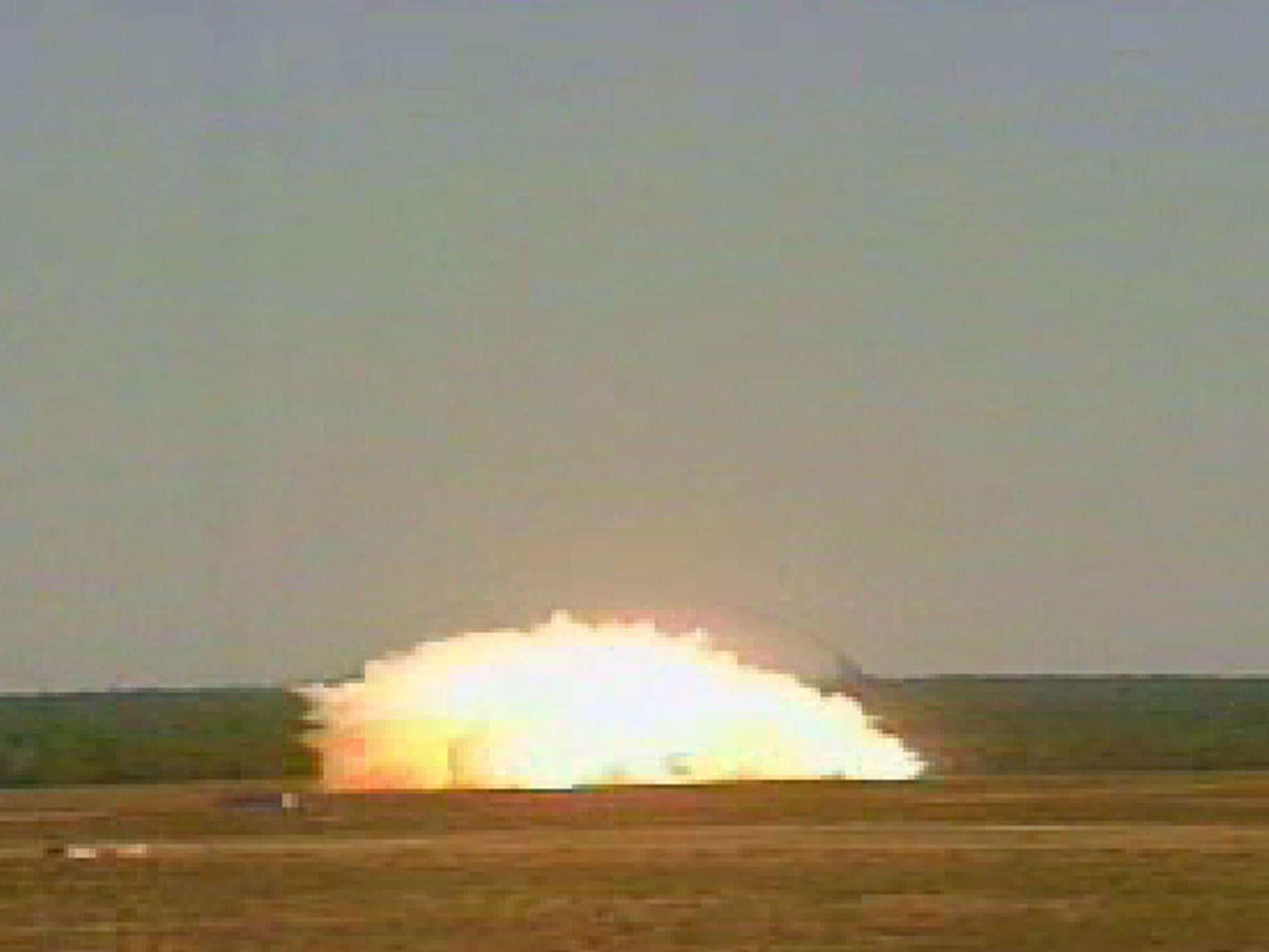US drops 'largest non-nuclear bomb' in Afghanistan area populated by Isis members
Pentagon official confirms the strike on Nangarhar Province in the east of the country
Your support helps us to tell the story
From reproductive rights to climate change to Big Tech, The Independent is on the ground when the story is developing. Whether it's investigating the financials of Elon Musk's pro-Trump PAC or producing our latest documentary, 'The A Word', which shines a light on the American women fighting for reproductive rights, we know how important it is to parse out the facts from the messaging.
At such a critical moment in US history, we need reporters on the ground. Your donation allows us to keep sending journalists to speak to both sides of the story.
The Independent is trusted by Americans across the entire political spectrum. And unlike many other quality news outlets, we choose not to lock Americans out of our reporting and analysis with paywalls. We believe quality journalism should be available to everyone, paid for by those who can afford it.
Your support makes all the difference.The US has dropped the "mother of all bombs" - the largest non-nuclear weapon ever used in combat by the US military - on an area of eastern Afghanistan known to be populated by Isis-affiliated militants.
The Pentagon said the strike was the first time the 21,000lb weapon had been used in combat operations.
A spokesperson for the US Department of Defence confirmed to The Independent that a MC-130 aircraft dropped a GBU-43 bomb at 7pm local time.
The weapon is known in the US Air Force by its nickname MOAB, or "mother of all bombs". MOAB stands for massive ordnance air blast.
Pentagon spokesman Adam Stump said the bomb was dropped on a cave complex believed to be used by fighters affiliated to Isis in the Achin district of Nangarhar, close to the border with Pakistan.
The mission had been in the planning stages for months, the Pentagon said in a separate statement. However, they "did not have the information" on whether the mission was being planned during the previous Obama administration.
US Army General John W Nicholson, commander of the country's forces in Afghanistan, said in a written statement that the strike was designed to minimise the risk to Afghan and US forces conducting clearing operations in the Achin area "while maximising the destruction" of Isis fighters and facilities. He said Isis has been using improvised explosive devices, bunkers and tunnels to strengthen its defences.
White House press secretary Sean Spicer said the US had used a “large, powerful and accurately-delivered weapon” to disrupt the movements of militants in the country.
“This is the right munition to reduce these obstacles and maintain the momentum of our offensive against Isis,” General John Nicholson, the head of US and international forces in Afghanistan, it said in a statement.
Though the Pentagon confirmed to The Independent that the "signoff" went up to General Joseph Votel, commander of US Central Command, they could not say whether the order went all the way up to the White House.
A source said Donald Trump may have authorised the use of the bomb but he does not have to. There has been no official confirmation of the President’s involvement in the strike.
Central Command approval was required because the MOAB had to be moved across theatres to prepare for the mission.
Mr Spicer avoided answering any questions on whether Mr Trump was involved in the bombing, instead deferring to the Department of Defence.
The cargo aircraft used to drop the bomb was already located in Afghanistan prior to the mission.
There have been no assessments of civilian deaths as yet and it was not immediately clear how much damage the bomb did.

The 'mother of all bombs' was developed and tested shortly before the 2003 Iraq war.
Retired Lt. Col. Rick Francona told CNN the blast would “feel like a nuclear weapon to anyone near the area".
Veteran General Mark Hertling told the broadcaster the "Air Force must have had a good target...normally smaller artillery could have been used”.
The remote border area with Pakistan has been known as a breeding ground for an Isis affiliate called IS Khorosan.
A source told The Independent that the affiliations and aims of militant groups located in the Nangarhar border area changed regularly, and it was not possible to say exactly which group may have been targeted.

Join our commenting forum
Join thought-provoking conversations, follow other Independent readers and see their replies
Comments